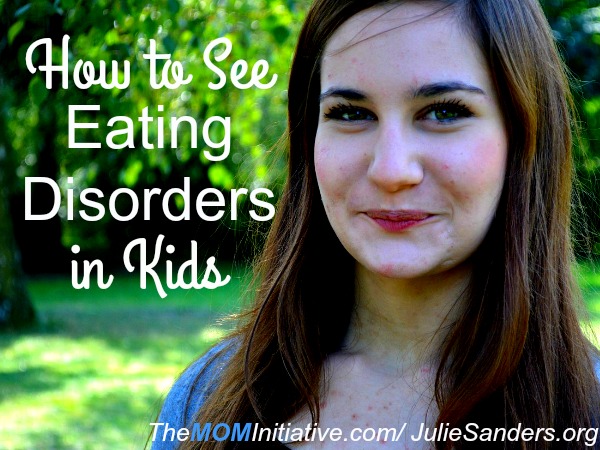On the day she shared her story with me, Katie Kluke’s blue eyes were full of hope. She wore a soft gray sweater that draped easily around her slender frame. Her voice was calm as she told how she once used her Daddy’s stability wrap to encircle her girlish self, making her feel wonderfully “small.” She recounts how she didn’t want “thunder thighs” or the way they made her look: not petite, even in second grade. By 8th grade, family stress stirred the lies in her heart and mind and a full-blown eating disorder in her body. The United States reports at least 10 million people struggle with eating disorders. More go unidentified. What can a mom do to see eating issues in the life of her child?
Katie Kluke is a Certified Health, Wellness and Addiction Recovery Coach who has established an Intensive Outpatient Program in Washington state, for the treatment of Eating Disorders & Mental Illness. She explained how having an eating disorder is, “like jumping into a swimming pool, and you’re sure the surface is there, but it’s not. A person is terrified to let it go.” She’s worked with children as young as 7, but she has learned that “An eating disorder is unbiased” when it comes to economic status, gender, faith, etc. Everyday triggers often expose unhealthy eating, erupting as a means of control or result of confusion, to name a few. While no mother wants to miss her child’s cry for help in our image addicted world, Katie points out that family members struggle to “see” disorders in those they know best. Anorexia, Bulimia, obesity, binge eating, and other disorders can hide right beside us, in our own home.
Katie’s perfectionism carried her into high school on a wave of Anorexia. “When I decided to eat,” she remembers, “I masked it with mass quantities of laxatives.” By the time Katie grew to be a young woman, her health was showing significant signs of stress. By the time she became a young wife, she fought relapses of laxative abuse and food restricting. “I was always in the hospital,” she remembers, admitting how she was unable to be the mom she longed to be. Tears framed her blue eyes as she said, “People that live in an eating disorder … its suffocating. It’s controlling.”
When it comes to food and health, God knows what we need. He also knows our potential to make food an idol. It can become a temptation to us as moms or to our children. “Therefore do not be anxious, saying, ‘What shall we eat?’ or ‘What shall we drink?’ or ‘What shall we wear?’ For the Gentiles seek after all these things, and your heavenly Father knows that you need them all.” (Matthew 6:31-32)
Characteristics of eating disorders are individual in nature. God knows those “clues” and the needs they point to. He knows and He cares. In order to identify and treat issues our children develop related to food, parents can watch for basic clues.
Basic Clues for Kids with Eating Disorders
- Changes in behavior
- Skipping meals
- Isolating from family and friends
- Visiting the bathroom shortly after a meal
- Friends change
- No longer social
- Removing one type of food from their diet
Moms should keep in mind girls and boys both deal with eating disorders, though boys may generally exhibit over-exercising as part of their palette of characteristics. Rather than allowing our kids to suffer lifelong consequences due to sustained disorders in childhood and youth, parents who become students of their kids can watch for signs they need help.
“I remember telling my parents and my parents just didn’t know what to do. I can’t imagine being the parent of a child with an eating disorder. My parents did the best they could. But for someone in their eating disorder, it’s their identity. They don’t want to get rid of it.”
Are you concerned that your child may be fighting an eating disorder? Katie encourages adults who see a child with these needs to:
- Meet them where they’re at
- Don’t go into it thinking you will fix it/save them
- Be compassionate
- Lovingly offer to find help together
For more information about how to care for a child dealing with a food issue, check out the National Eating Disorder Association; it is full of resources, including a Toolkit for Parents. Contact Katie Kluke here.
- Election Day and empowering, enduring truths for moms - November 8, 2016
- Loving People: How Moms can Make Life a Lesson in Loving - October 11, 2016
- A Child’s Heart and the Hidden Treasure of Talking Back - September 13, 2016



